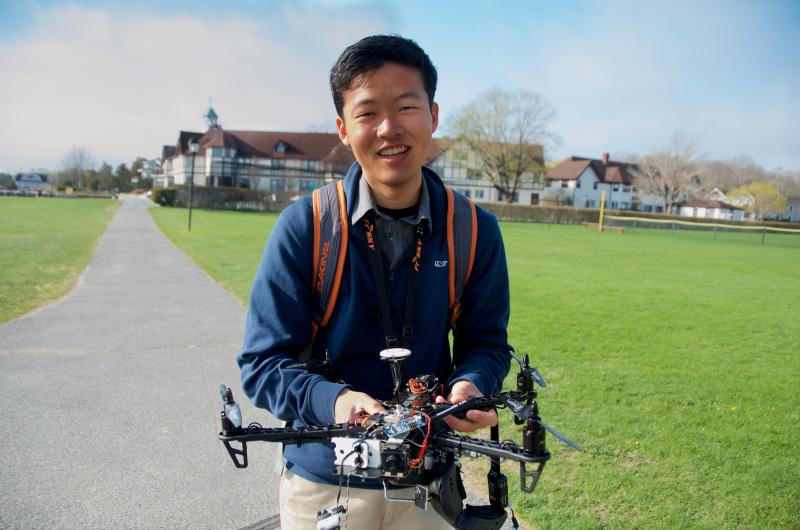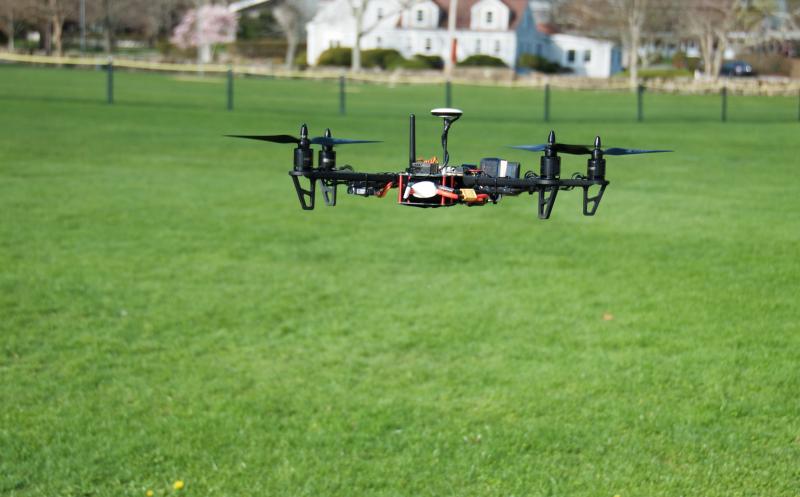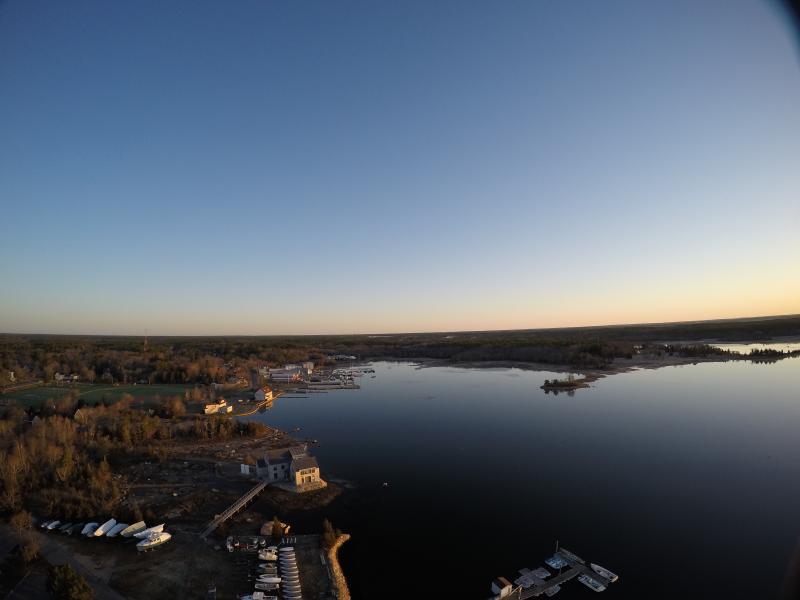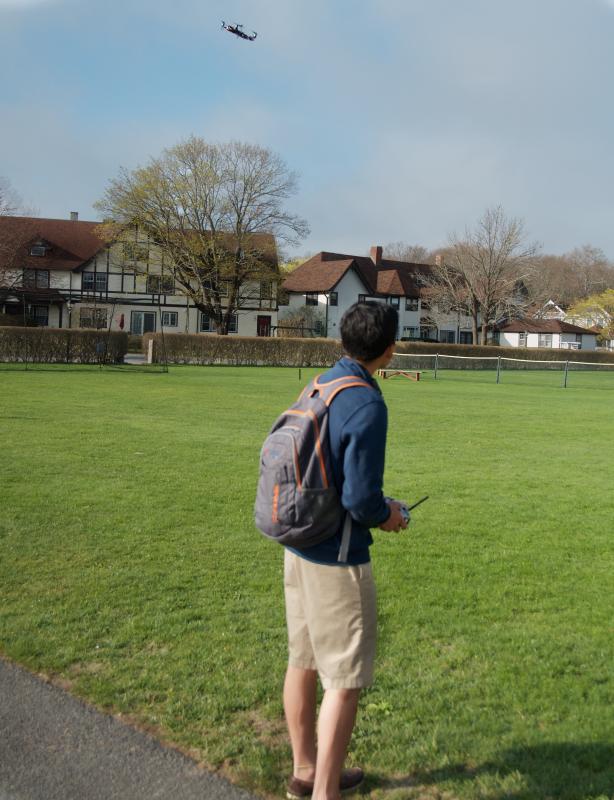Drone project takes flight on Tabor campus
Whether they are for business, combat or hobby, drones are as much a topic of conversation as they are a point of contention. That’s exactly why Michael Tan chose to build one for his senior project at Tabor Academy.
“I wanted to make something controversial, something people would be very interested in,” said Tan.
A native of San Francisco, Tan has been a budding scientist and engineer since kindergarten. Influenced by his dad, Mike Tan, an electrical engineer with Hewlett Packard, he said, “Instead of having toys to play with, I’d be playing with LEDs, batteries, wires.”
For his drone, Tan invested more than $2,000 in equipment and parts, choosing to build it to his own specifications rather than using a kit so he would know how to fix it.
“I knew I’d crash – that’s with any learning process,” said Tan. “When I sail, I crash boats all the time. If I do crash, I can just rebuild it.”
Assembling the drone wasn't too hard for Tan, who has built several computers. It took him about five days, including two sleepless nights of experimenting.
“You have to know what props and what motors you want,” he said. “It may sound difficult, but it’s not.”
That’s not to say there weren’t new things to learn and some trial and error before and after getting the drone off the ground.
Tan had to learn to use a 3D printer at the school to create at least one custom part for the drone, and there was the little problem of getting the propellers to turn the right way.
“The first time I tried to fly it, I had the motor spinning the wrong way. It was just pushing itself in into the ground,” Tan said.
Once he resolved that issue, the drone was airborne.
Equipped with four propellers, two cameras and GPS, the drone has at least a one-mile range and can go up to 40 mph, all while delivering a live video feed that is projected onto a pair of goggles Tan wears while flying his contraption over campus.
In getting approval to build the drone, part of Tabor’s optional senior project program, his advisers did set some rules. Tan has to keep Federal Aviation Administration regulations, including flying under 600 feet. He also has to stay 100 feet away from dorms and crowds of people.
Tan isn’t interested in the surveillance aspects of drones anyway, though he does want his flying machine to benefit the school.
“After getting approved, I thought, ‘how do I turn this into something cool for the school?’” said Tan.
He is in the process of creating a four-minute video presentation showing sweeping overhead views of the campus that the school will be able to use in the future.
Despite his technical skills, Tan said he’s leaning towards studying premed not engineering when he matriculates to the University of San Francisco in the fall.
In the meantime, he is considering building a smaller, faster drone this summer that he can race with other enthusiasts in his hometown.
“It’s play for me,” said Tan. “I’d consider myself more of a hobbyist. I just like to buzz around.”



















